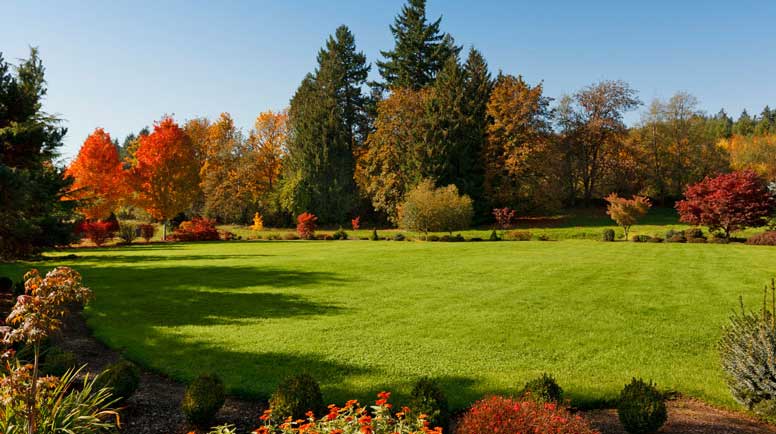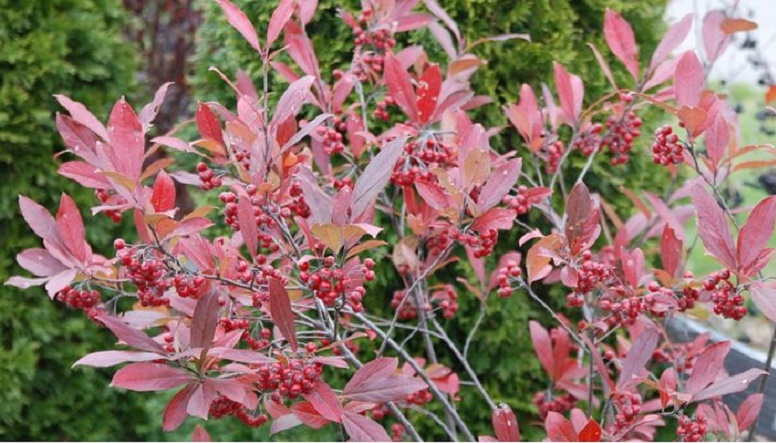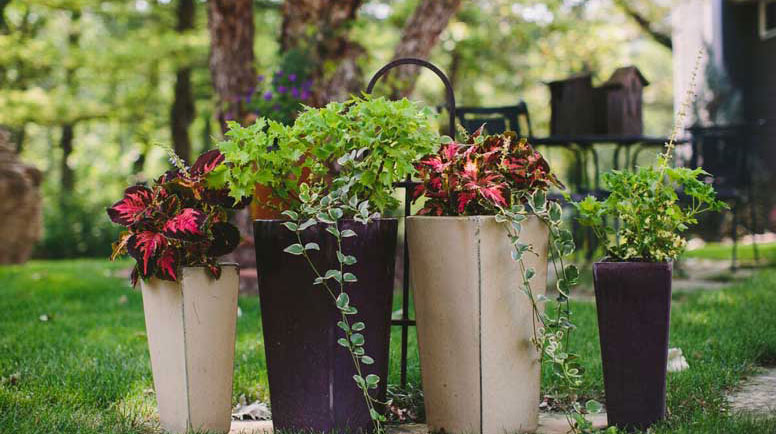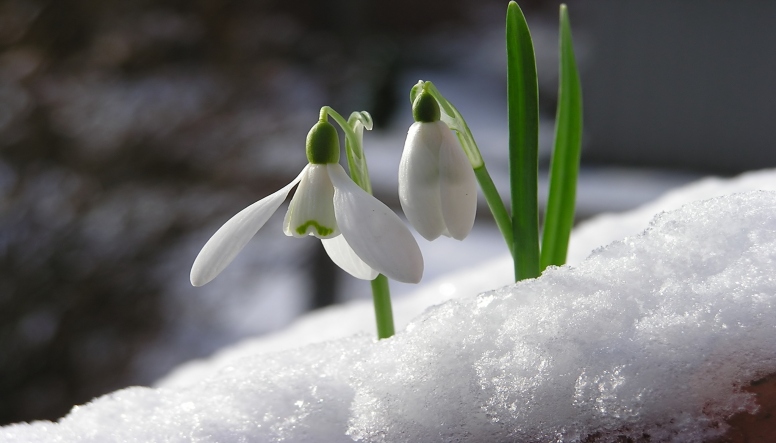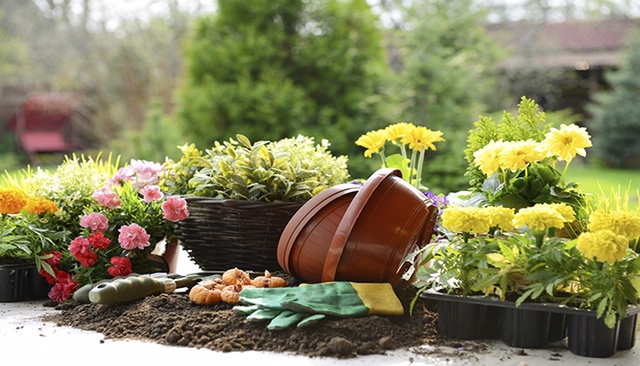PERFECT PLANTS FOR PRIVACY
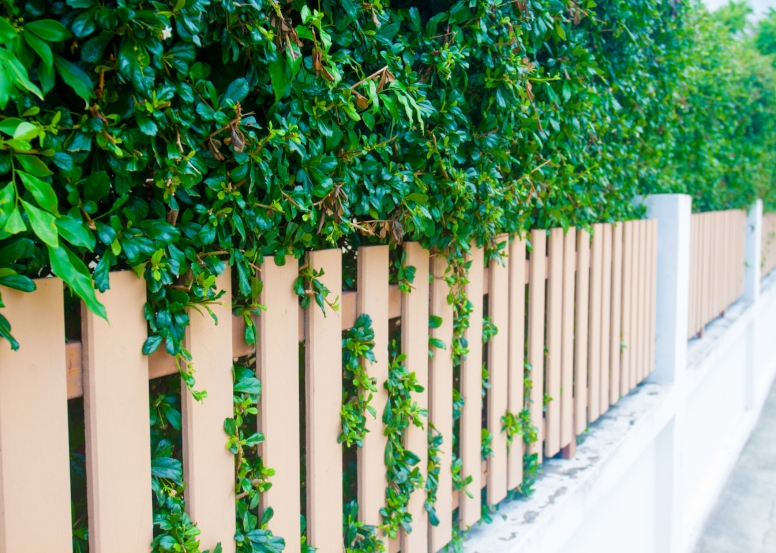
From elegant evergreens to vines, grasses, and perennials, there’s a wide selection of plants that can help you create a lush and lovely private retreat.
You get along well with your neighbors, but wouldn’t it be nice to keep your private back yard, well, private? You can put up a fence or a wall—and there are many attractive options for a hardscape barrier—but if you’d prefer to have something a little more colorful, there are plants that are perfect for providing privacy.
Screening plants work in a number of ways: they can prevent nosy neighbors from peering in; they can create a beautiful distraction from a less-than-lovely view; they can soften and brighten a drab chain link fence. They can even serve to camouflage a utility box or air conditioning unit.
And just as there are many ways to use screening plants, there are many plants that can be used to screen. Evergreens, of course, are the go-to plants, and their dense green foliage provides the most coverage year-round. But if your property doesn’t require much privacy in the colder seasons, you can create a beautiful screen using vines, grasses, and perennials that fill the void with color and texture.
This is a good time to plan for your new privacy planting, and the best way to begin is to determine just what it is you want to accomplish.
- Do you need full coverage, fully blocking the view into your property?
- Do you want to ornament—or hide—an existing fence?
- Do you want to create a distraction?
Once you’ve decided, you can begin to select the plants. Be sure to ask the experts at your local garden center for their recommendations. They’ll know which plants work best in your area, in your hardiness zone, and for your particular needs.
Let’s take a look at the kinds of plants that are suitable to plant for privacy.
Living Fences
Because many conifers tend to grow in a dense habit, their foliage blocks the view of curious neighbors. They’re slower to mature than perennials and grasses, of course, but their more permanent structures make them ideal for use as a living fence.
Your designer or garden center pro can help with plans but keep one thing in mind: Planting these trees too closely together is asking for trouble. It’s tempting to plant in one straight line, but if the trees are staggered slightly in a sort of zigzag pattern, you’ll provide for better air flow as well as allow sufficient room for natural growth.
Junipers (Juniperus species) come in all shapes and sizes, and a wide range of colors, but there are several upright selections that serve nicely as screening. A fast-growing cultivar named ‘Skyrocket’ quickly reaches 15 to 20 feet tall and spreads to only 2 to 3 feet wide. It offers beautiful, bluish green foliage.
‘Hetzii columnaris’ also grows rapidly, reaching 10 to 15 feet tall with a 5- to 8-foot spread. Foliage is bright green, with a lovely bronze tint during winter months.
‘Blue Point’ retains excellent blue-green color throughout winter. Growing quickly to 10 to 12 feet tall by 6 to 8 feet wide, it serves well as a windbreak as well as a privacy screen.
Selections of Thuja species—known more commonly as arborvitae—appear to be tailor-made for screening. Many are fast growing, quick to fill in empty spaces where a privacy screen is most needed.
A landscape favorite is Emerald Green (Thuja occidentalis ‘Smaragd’), a narrow cultivar that reaches 15 feet tall and remains only about 3 to 4 feet wide. Highlighted by rich, dense foliage, it tends to maintain its color throughout winter.
‘Green Giant’ grows to 40 to 60 feet—often adding up to 3 or 4 feet per year—and spreads 12 to 18 feet, so it is best planted on larger properties. Feathery foliage is dark green and does not fade or turn yellow in winter.
‘Hetz’ Wintergreen’ is narrow and columnar, spreading 5 to 10 feet wide and growing up to 20 to 30 feet tall. It tends to have a strong central leader, which helps to hold the tree erect and avoid the flopping tendency of some arborvitae selections.
Changing with the Seasons
If you can tolerate the lack of permanent screening during the idle months—or if you’re looking for a faster fix—you can choose plants that will distract and beautify without blocking the view entirely.
Vines are a natural choice for fences and walls, but they often get a bad rap. Their ability to spread and cover rapidly—an asset if you need privacy now—also can lead to invasive tendencies. Be sure to do your research and eliminate those selections that are overly aggressive in your area. That said, vines offer several seasons of flowers and foliage.
Clematis species are among the most commonly used, and for good reason. The variety of colors and bloom types is breathtaking, and if a few different cultivars are interplanted, you can create a sequence of bloom that will provide a floral display for months on end.
Climbing hydrangea (Hydrangea petiolaris) needs strong support, but it will reward you with dense coverage and sparkling lacecap-type blooms.
Star jasmine (Trachelospermum jasminoides) offers a look similar to sweet autumn clematis, but without the risk of invasiveness. Although it’s hardy only in warmers areas (zones 8 to 10), the fragrance alone will win you over. An alternative for cooler climes is winter jasmine (Jasminum nudiflorum), which grows in zones 6 to 9. Its yellow, starlike flowers blossom early, before the foliage emerges.
For an unusual “bloom,” plant hops (Humulus lupulus). Bright green leaves remain fresh all summer, and they’re joined by unusual, chartreuse cones.
Tall perennials are a natural choice for creating a distraction, producing varying shapes and shades of foliage in addition to a rainbow of flowers. Look for selections with strong stems and sturdy foliage, both of which will help to draw the eye before and after flowers reign. Cultivars of Echinacea (coneflower) and Rudbeckia (black-eyed Susan) offer brilliant, rayed flowers in varying colors. For a softer, cottage-garden look, choose selections of Delphinium and Liatris (blazing star) and fill in with Russian sage (Perovskia atriplicifolia).
Perennial hibiscus (Hibiscus moscheutos) produces pops of dazzling, almost tropical color, and a more country-style look-alike is Alcea (hollyhock), which can grow more than 6 feet tall. In warmer zones, Canna selections rise to offer large, strong, upright foliage and strong yellow, red, orange, and pink flowers.
Goatsbeard (Aruncus dioicus) is a densely growing plant that can reach 4 to 6 feet tall, producing a haze of unusual blooms that resemble those of the smaller astilbe.
The selection of ornamental grasses for privacy can be overwhelming. If you’re looking for grasses to screen your property, be sure to investigate for invasive tendencies, particularly in your area. Some grasses, such as Miscanthus, are known to be thugs in many parts of the country, but beautiful—and trustworthy—cultivars have been bred specifically to keep the plants in check.
So, if you decide to use grasses to screen out the view, or to create a privacy perimeter around your property, check out reliable options like Calamagrostis ´ acutiflora ‘Karl Foerster’ (feather reed grass), the native Andropogon gerardii (big bluestem), colorful Panicum virgatum (switchgrass), larger varieties of Pennisetum alopecuroides (fountain grass), and selections of soft Muhlenbergia capillaris (muhly grass).
Portable Privacy
Plants in containers can provide screening for your condo balcony or serve as a peripheral fence for a patio or deck. Many shrubs, such as small hydrangeas, butterfly bush, and elderberry, with its strong, dark foliage, grow well in pots, and they can be transplanted into the garden later, if desired.
Bamboo is known to be highly invasive in many areas, but confined to a container, the canes reach only about half their normal height. Arranged in groups, bamboo will create a dense screen.
Flowering perennials and tropical plants, as well as ornamental grasses, are excellent selections for building a containerized living barrier. And because you can switch it up whenever you please, your living screen can change for each occasion.
Avoiding the Risk of Monocultures
A word of caution when creating a living privacy screen: Mix it up a bit to avoid planting only one species. Monocultures can be breeding grounds for trouble. If one plant succumbs to an insect pest or a disease common to the species, the blight likely will spread to the rest of the plants. If this happens, you risk losing the entire screen. Interplanting unrelated selections with similar cultural requirements can help you avoid this disaster.

